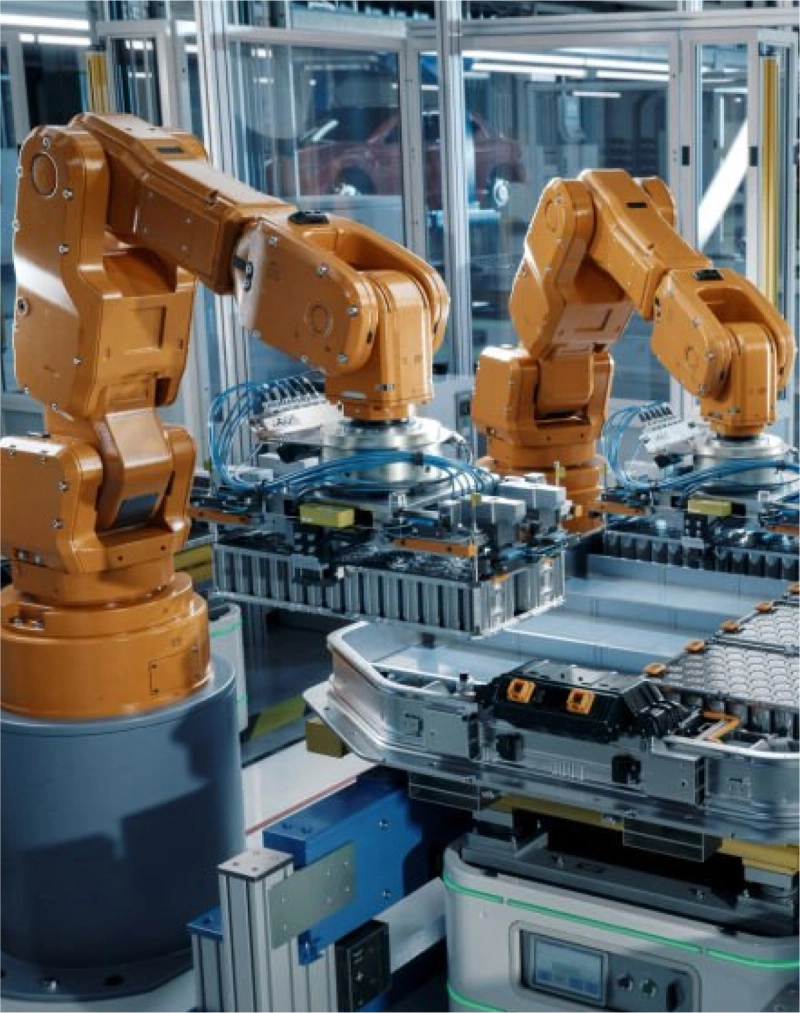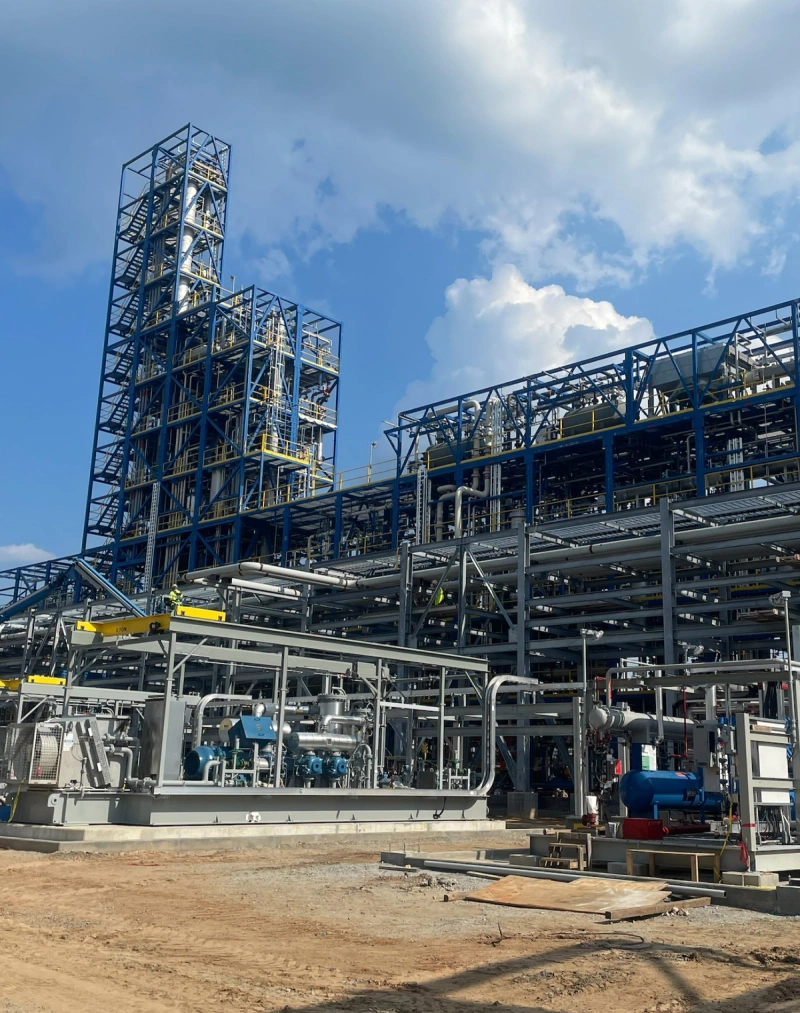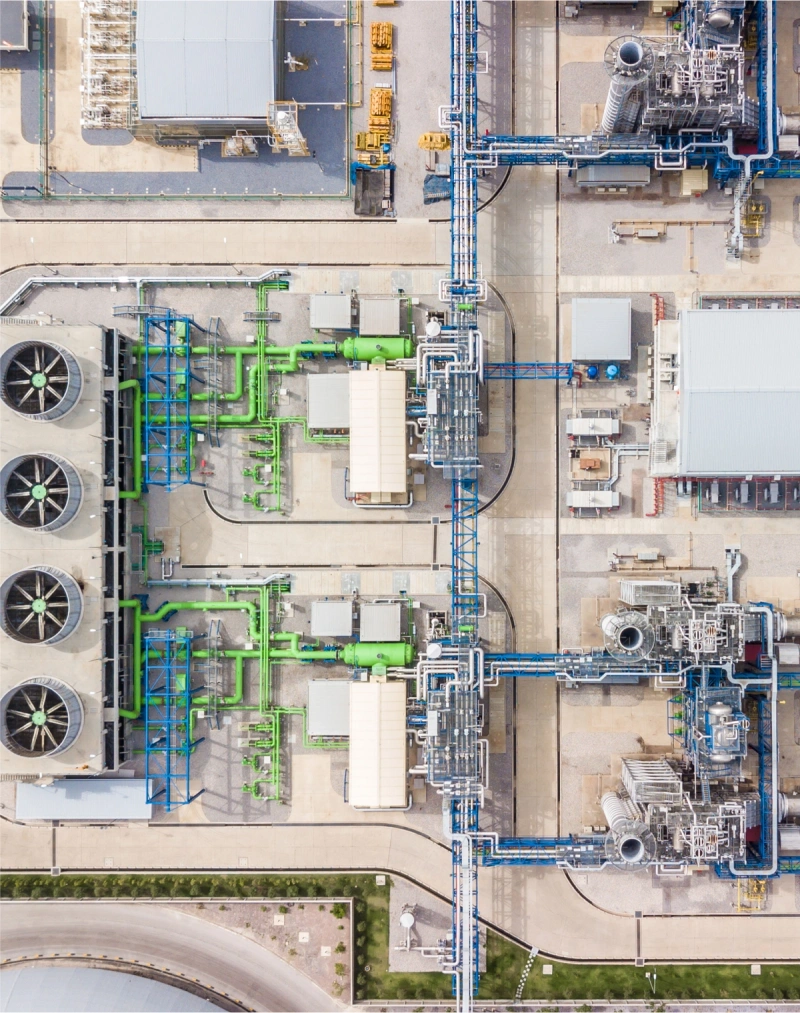A bridge crossing a large body of water, with forest and mountains in the distance
Breakthrough Energy Catalyst
Deployment
Imagine you’re an innovator working on emerging climate technologies. You pour your blood, sweat, and tears into developing the technology. Once you get it to work, investors will surely be knocking on your door. Right?
Unfortunately, it’s not that simple.
For a new technology to draw investors, it needs to be “derisked.” That means more than just proving the technology can work. It means proving it can work at scale — and be cost competitive with fossil fuel alternatives.

Badwater Basin in Death Valley National Park, Inyo County, California
All new technologies need to be “derisked,” but especially new climate technologies. Often a company’s first commercial-scale project seems too risky for traditional infrastructure investors. These projects require huge sums of funding, and have highly uncertain returns.
In short, there is a treacherous gap between technology development and technology deployment at large scale. Innovators sometimes call this, “the valley of death.” Most new technologies being deployed in first-of-a-kind (FOAK) projects never make it across.
But what if we could help build a bridge across the “valley of death?” That’s where Breakthrough Energy’s deployment program, Catalyst, comes in.
By using its capital alongside our team’s energy-infrastructure-investing and project-development expertise, we work with innovators to advance their projects from the development stage to funding and ultimately, to construction — starting the derisking process and reducing the technology’s green premium to increase the chances it will make it to the other side of the valley.

Robotic arms assembling an EV battery pack at a commercial scale plant. Catalyst is helping companies reach this stage and learn by doing.
If our Discovery-stage work helps accelerate the earliest-stage of innovation through Fellows, Explorers, and Innovation Workshops, and our Development work accelerates climate-tech company-building through groundbreaking venture funds, then you can think of our Deployment work as accelerating late-stage innovation — what’s often called learning-by-doing, which is what happens when projects get developed and built, processes improve, and costs come down over time.
Because at this stage, innovators need more than just financing. They need expertise.
Innovators need people who understand how to get sites, permits, easements, interconnections, and regulatory approvals. They need business development people looking for customers, securing critical feedstocks and power. And they need people advancing the project design, engineering, procurement, and construction plans, including identifying key equipment and contractors.
Finally, they need the team to execute complex construction while adhering to timelines and strict budgets. Catalyst
provides not only critical funding, but also this infrastructure expertise to lower the engineering and other operational risks of promising technologies. And we unite companies with key stakeholders such as investors, off-takers, and governments to enable demonstrations or build commercial-scale projects.
Our criteria for the projects and technologies we support focus not focuses on two main attributes: impact and replicability.
Not every project is a fit for Catalyst, but we let innovators know why they fall out of our scope. For example, we wouldn’t support a conventional investment in wind or solar energy, which can usually attract funding elsewhere. Nor would we support a project that can only work in the American Southwest.
What we take on must be scalable around the world, including and especially in emerging markets. Certain technologies may have already achieved some level of success — via pilot projects or a technical demonstration — but require additional funding for much larger FOAK projects to prove that they can scale up.
Breakthrough Energy Catalyst
What We’ve
Achieved (So Far)
1
1
Catalyst has identified five areas that were ripe for our unique derisking approach: clean hydrogen, long duration energy storage (LDES), sustainable aviation fuel, direct air capture, and manufacturing.

LanzaJet’s alcohol-to-jet biorefinery in Soperton, Georgia.
These are areas where new technologies have emerged from the discovery and development phases but are not yet mature enough to attract capital from typical infrastructure investors.
They’re also areas where the technologies are more expensive than fossil-fuel alternatives. Over the past year, the Catalyst team has tried to home in on technologies in these areas. We’re looking at ones that will reduce the most emissions and will be easily replicable. We’ve also attracted projects that are geographically diverse, with out one-third of our investments happening in Europe.
Here’s some updates
Clean Hydrogen
Catalyst’s focus continues to be on electrolytic hydrogen production, particularly via technologies like Alkaline Water and Proton Exchange Membrane (PEM) electrolysis.
Long Duration Energy Storage
Catalyst continues to back as many viable storage technologies as possible. If we want to dispatch renewable energy 24/7, the world needs options, including technologies that don’t rely on lithium-ion batteries and are capable of “intraday energy shifting” — around 10 hours of energy storage — or “multi-day shifting,” which is about 100 hours of storage. This work builds on grants we’ve made in the past, like the $20 million for Xcel Energy to support the deployment of two multi-day, long-duration energy storage projects.
Sustainable Aviation Fuel
Catalyst is prioritizing new SAF technologies that can scale globally with a near-term focus on “Power-to-Liquids” projects. We’re also supporting the scale-up of e-fuels production by working with projects to de-risk conventional electrolyzer technology and prove end-to-end process integration at an unprecedented scale. This work builds on the successful grants we’ve made, including $50 million to Lanzajet . With the money, they are completing construction of their alcohol-to-jet fuel Freedom Pines Fuels plant in Georgia.
Direct Air Capture
In the carbon removal space, we continue to analyze a number of engineered carbon removal solutions, like carbon mineralization, solid sorbent, and liquid solvent.
Manufacturing
Catalyst added manufacturing as a focus this year — specifically the manufacturing of cement, steel, plastics, textiles, and fertilizers.
Catalyst also began operationalizing its €840 million partnership with the European Investment Bank and the European Commission. We also previously announced a similar partnership with the United Kingdom to be made operational and are closely collaborating with the U.S. Department of Energy.
European Commission President Ursula von der Leyen Delivers Remarks
Breakthrough Energy Catalyst
What We’ve
Learned (So Far)
2
2
If there’s one thing we’ve learned over the last year, it’s that this is hard work. All of these technologies will face obstacles related to financing, technological reliability, standardization, and regulation. So how can they avoid the common pitfalls of scaling up? Here are five things the Catalyst team has learned so far.

The shadow of a plane against an array of solar panels
First, these companies need a marketplace that sets them up for success. That means securing strategic anchor investors and long-term offtake agreements for their products under terms that will eventually attract infrastructure investors.
Take the airline industry, for example. We know we need to cut emissions from plane travel. One avenue is through sustainable aviation fuel (SAF). It is one of the most straightforward decarbonization stories given that, for the most part, infrastructure and airplanes do not need to be replaced —– just the fuel. Unfortunately, airlines typically only buy fuel stock for months at a time, not multiple years ahead. That is far too short of an offtake for emerging SAF companies to attract investment and guarantee revenue. It’s critical that aviation fuel buyers agree to offtake agreements of no less than ten years in order to give investors the confidence they need to invest capital in production. Catalyst has helped explain this to forward-thinking airlines, and those airlines are signing long-term agreements for some of the projects we are backing.
We’ve seen this work before. The solar and wind power revolutions were built on the backs of 20-year offtake agreements with utility companies. This gave investors the confidence to support these technologies, helping them scale and ultimately change the landscape of the electricity industry.
Second, it’s vital for developers and investors to structure construction and equipment contracts that isolate risk, incentivize high performance, and ensure tech reliability and replicability. New projects can often face delays and unexpected costs, especially during the physical construction phase. In fact, only about 10% of capital projects come in on time and on budget.
To put investors at ease, those developing FOAK projects should insist on engineering, procurement, and construction (EPC) contracts that create clear accountability for quality, costs, and risks among qualified contractors, as well as build in incentives and adequate resources (such as time and dedicated funds) for on-time and on-budget execution. There needs to be a very strong risk sharing framework that allows all parties to be able to rely on these contracts and have a high certainty that the project will be built.

Aerial view of electric substation. Electric substations like this can help ensure new technologies are powered by clean energy
Third, while developers of these projects should court early customers, they should be careful about locking in pricing until the design of their project is mature and the full costs are known. As mentioned earlier, project costs typically increase as the design matures, and this must be considered before a final investment decision can be made.
Fourth, projects need to show reliable access to feedstock and clean electricity supply. It’s impossible to attract long-term investors to projects that can’t show they have a stable supply of the raw materials necessary to make the technology work. What’s more, it’s not worth investing in a climate project that negatively impacts the environment. That’s why it’s critical for these technologies to be supported by clean electricity.
Workers installing solar paneling on the roof of a large warehouse
Finally, developers should look at how all the pieces of the project fit together and ask themselves, “Can this support my nth project?” This goes back to our first lesson: Set yourself up for long-term success.
Emerging climate tech should not be a business of one-offs. By definition, we need technology and agreements that can scale and go the distance, shifting markets and modeling success for other players. Emerging technologies should try to share information, standards, and best practices where possible. This helps ensure broader industry success by improving tech reliability and preventing other companies from making avoidable mistakes.
What’s Next
Expand, Expand,
Expand
3
3
As we head into the new year, Breakthrough Energy is focused on expansion across all areas of our deployment work. How do we expand funding to projects beyond our current pipeline of projects? How do we reach deeper into the decarbonization of industry? How do we expand our reach to support projects in other markets around the globe? How do we expand our partnership base and draw in new investors to help lift up these critical technologies?

Rows of pipeline at sunset
If we’re going to meet our climate goals, we need to catalyze innovation all around the world. With the right capital solutions and expertise, cleaner alternatives can displace carbon-intensive technologies and help us reach net zero.
Cross-cutting
Policy
When the first modern electric cars hit the market in the late 1990s , interest was limited. The first people to buy them were either very rich, very climate-conscious, or both.
It wasn’t until the 2010s that electric vehicles (EVs) finally found something like a mass market. Why? Batteries became much cheaper, and EVs became far more affordable — but another key factor was that the government intervened. In 2009, the United States implemented a federal EV tax credit, giving a $7,500 rebate to anyone who purchased a qualifying EV. One 2018 study found that every $1,000 offered as a rebate or tax credit increases average sales of EVs by 2.6%.
Scroll to navigate to
next section
Click to navigate to
next section
